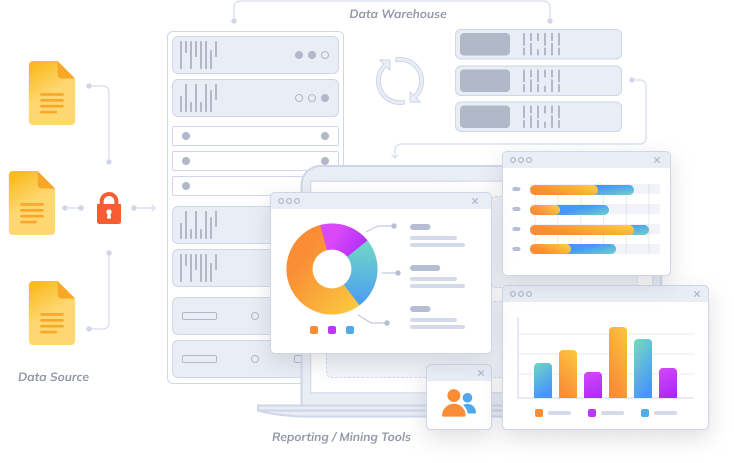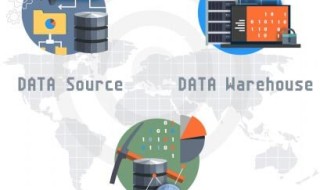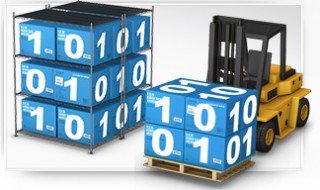
In the digital era of 2025, businesses are generating and collecting data at an unprecedented rate. Information flows in from every corner – sales transactions, customer interactions via CRM, website analytics, marketing campaigns, supply chain operations, financial systems, IoT devices, and more. While this data holds immense potential value, it often resides in disparate systems, creating isolated "silos" that make it incredibly challenging to get a holistic view of the business, ensure data consistency, or derive meaningful, cross-functional insights.
How can you make sense of this data deluge? How do you transform fragmented information into actionable intelligence that drives growth? The answer for many forward-thinking organizations lies in implementing a Data Warehouse (DW). A data warehouse acts as a central repository, specifically designed to integrate, store, and analyze large volumes of historical and current data from various sources, providing a foundation for powerful business intelligence.
Understanding the benefits data warehouse solutions provide is crucial for any company aiming to become truly data-driven. Let's explore the top advantages that make data warehousing a strategic imperative.
What is a Data Warehouse? (A Quick Primer)
Before diving into the benefits, let's briefly clarify what a data warehouse is. It's not just another database. While a standard operational database (like one powering your e-commerce site) is optimized for handling real-time transactions (Online Transaction Processing - OLTP), a data warehouse is optimized for analysis and querying (Online Analytical Processing - OLAP).
Key characteristics include:
- Subject-Oriented: Data is organized around core business subjects like 'Customer,' 'Product,' 'Sales,' or 'Finance,' rather than specific application processes.
- Integrated: Data from diverse sources (ERP, CRM, marketing tools, etc.) is cleaned, transformed, and standardized to ensure consistency. Discrepancies in naming conventions or formats are resolved.
- Time-Variant: Data warehouses store information over time, often including historical snapshots. This allows for trend analysis, comparisons, and tracking changes.
- Non-Volatile: Data loaded into the warehouse is typically stable and not updated in real-time like transactional data. It provides a historical record, updated periodically (e.g., daily or weekly).
Data gets into the warehouse through processes known as ETL (Extract, Transform, Load) or ELT (Extract, Load, Transform), which pull data from source systems, clean/reshape it, and load it into the warehouse structure.
Unpacking the Top 10 Benefits Data Warehouse Solutions Deliver
Implementing a data warehouse is a strategic investment that yields significant returns across multiple business functions. Here are the key benefits data warehouse solutions offer:
- A Single, Centralized Source of Truth: Perhaps the most fundamental benefit. A data warehouse breaks down crippling data silos by integrating information from across the organization. Instead of the marketing team using one set of customer data and sales using another, potentially conflicting, set, everyone accesses the same unified, consistent data from the warehouse. This eliminates discrepancies, reduces arguments based on "whose numbers are right," and fosters trust in the data used for reporting and decision-making.
- Enhanced Business Intelligence (BI) and Decision Making: Data warehouses are the bedrock of effective BI. They enable complex analytical queries that would be too slow or resource-intensive to run on operational databases. By feeding cleaned, integrated data into BI tools, businesses can create insightful dashboards, generate comprehensive reports, and visualize trends easily. This empowers decision-makers at all levels with accurate, holistic insights, leading to faster, more informed, and data-backed strategic choices – from optimizing marketing spend to identifying new market opportunities.
- Improved Data Quality and Consistency: Poor data quality is a major obstacle to effective analysis. The process of loading data into a warehouse (ETL/ELT) inherently involves steps for data cleansing, validation, standardization, and transformation. Inconsistent naming conventions are unified, missing values can be addressed, errors are corrected, and data is formatted consistently. This focus on data hygiene ensures that the information within the warehouse is accurate, reliable, and trustworthy, significantly improving the quality of subsequent analysis and reporting.
- Powerful Historical Analysis and Forecasting: Unlike operational databases that often only store current data, data warehouses are specifically designed to retain large volumes of historical information efficiently. This allows businesses to analyze performance over long periods, identify seasonality, track trends, understand customer behavior evolution, and compare results year-over-year. This historical perspective is invaluable for accurate forecasting, strategic planning, and understanding the long-term impact of business decisions.
- Faster Query Performance for Analytics: Trying to run complex analytical queries on a live transactional database can severely slow down critical business operations. Data warehouses use different architectures (often columnar storage and massive parallel processing) optimized for read-heavy analytical workloads. This means complex reports and analyses can be run quickly without impacting the performance of operational systems like your CRM or order processing platform.
- Demonstrable Return on Investment (ROI): While setting up a data warehouse requires investment in technology and potentially expertise, the returns often far outweigh the costs. Calculating Data ROI involves assessing the value generated (e.g., cost savings from reduced errors and inefficiencies, increased revenue from data-driven campaigns or product development, improved operational performance) against the cost of the data initiative. The enhanced decision-making, operational efficiencies, and competitive advantages derived from a well-managed data warehouse typically result in a significant positive ROI over time.
- Scalability to Accommodate Growth: Businesses generate more data every year. Modern data warehouse platforms, particularly cloud-based solutions, are built for scalability. They allow organizations to easily scale storage capacity and computing power up or down as needed, ensuring the warehouse can handle growing data volumes and increasing analytical demands without requiring massive upfront infrastructure investments.
- Enhanced Data Security and Governance: Centralizing critical business data into a well-managed warehouse environment makes implementing consistent security measures easier. Access controls, data encryption (at rest and in transit), and auditing can be applied more uniformly. This structured approach also simplifies data governance and compliance with regulations like GDPR, CCPA, or HIPAA, as it provides a clearer view of where sensitive data resides and how it's being used.
- Increased Productivity and Time Savings: Data analysts and business users often report spending a large portion of their time (sometimes up to 80%) simply finding, cleaning, and preparing data before they can even begin analyzing it. By providing a pre-integrated, clean, and reliable data source, a data warehouse drastically reduces this preparation time. Analysts can focus more on deriving insights, and report generation becomes much faster and more straightforward, boosting overall productivity.
- Foundation for Advanced Analytics (AI/ML): As businesses look towards predictive analytics, machine learning (ML), and artificial intelligence (AI) to gain deeper insights and automate processes, a data warehouse becomes even more critical. These advanced techniques require large volumes of high-quality, integrated historical data for training models effectively. A data warehouse provides the ideal, curated dataset needed to fuel these powerful analytical capabilities.
Data Warehouse vs. Database vs. Data Lake: Quick Clarification
It's helpful to understand how a DW differs from other data storage concepts:
- Operational Database (OLTP): Focuses on recording real-time transactions, optimized for fast inserts, updates, and deletes. Highly structured (normalized). Think of the database behind your online store's checkout.
- Data Warehouse (OLAP): Focuses on analyzing historical, integrated data, optimized for complex read queries. Structured (often denormalized for query performance). Built for BI and reporting.
- Data Lake: Stores vast amounts of raw data in its native format (structured, semi-structured, unstructured). Highly flexible, schema-on-read (structure applied when data is queried). Often used for data exploration, ML model training on raw data.
These systems aren't mutually exclusive; they often coexist in modern data architectures (e.g., data flowing from databases and lakes into a data warehouse).
Key Considerations for Data Warehouse Implementation
Successfully implementing a data warehouse requires careful planning:
- Define Clear Business Goals: What questions do you need to answer? What KPIs need tracking?
- Choose Architecture: Cloud-based warehouses offer flexibility and scalability, while on-premise or hybrid options might suit specific security or regulatory needs.
- Select ETL/ELT Tools: Choose tools that can handle your data sources and transformation needs.
- Data Modeling: Design an effective schema (like star or snowflake) optimized for your analytical needs.
- Data Governance & Quality: Establish rules, processes, and responsibilities for maintaining data quality and security from the outset.
- User Training: Ensure users know how to access and leverage the data warehouse effectively.
The Crucial Role of Data Integration & Sharing (Powered by Expertise)
A data warehouse's value is fundamentally tied to the quality and accessibility of the data it holds. Getting data from diverse source systems into the warehouse reliably, and then sharing the derived insights out to users or other applications, hinges on a robust data interface and data sharing capabilities. This is where specialized expertise becomes critical.
Building and managing the data pipelines (ETL/ELT processes) that feed a data warehouse requires proficiency in connecting disparate systems (like CRMs, ERPs, marketing platforms, custom databases), handling various data formats, ensuring data integrity during transfer, and scheduling automated updates. Without seamless data flow, the warehouse cannot deliver on its promise.
Webxloo excels in architecting and implementing these vital connections. Our expertise in creating efficient data interfaces and enabling secure data sharing ensures that your data warehouse receives the accurate, consistent, and timely data it needs. We help businesses build the necessary data integration pipelines, bridging the gap between operational systems and analytical platforms. This ensures that the benefits data warehouse solutions are designed to provide can be fully realized, powered by data you can trust. Furthermore, we facilitate the sharing of valuable insights derived from the warehouse, making them accessible where needed.
Conclusion: Transforming Data into Your Competitive Advantage
In an era defined by data, simply collecting information is not enough. The ability to integrate, analyze, and act upon that data is what separates market leaders from the rest. Data warehouses provide the essential foundation for this transformation, breaking down silos and turning fragmented data points into a cohesive, strategic asset.
The benefits data warehouse solutions offer – from providing a single source of truth and enhancing business intelligence to improving data quality, enabling historical analysis, and boosting performance – are compelling reasons to consider this technology. While implementation requires planning and investment, the potential ROI through smarter decisions, increased efficiency, and new opportunities makes it a strategic imperative.
Ultimately, harnessing the power of your data requires both the right analytical platform, like a data warehouse, and robust data integration capabilities to feed it reliably. By focusing on these elements, potentially with the support of data interface experts like Webxloo, businesses can truly unlock the value hidden within their data and gain a significant competitive edge.




 Phone Consultation
Phone Consultation
 Request a quote
Request a quote
 Text a Message
Text a Message